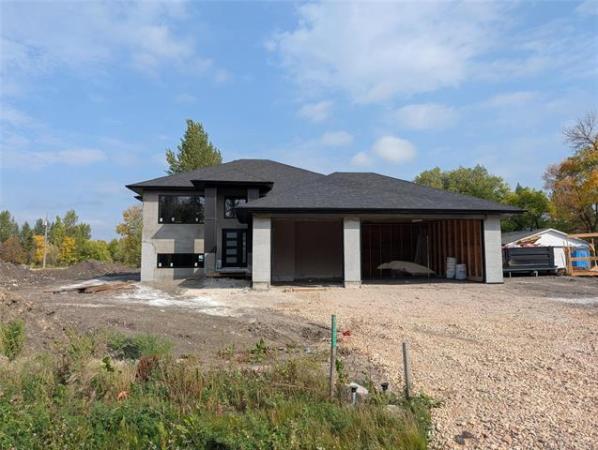Question: I have several spots that have caused me problems in the spring, when I come back from my three-month snowbird getaway. I had my roof replaced four years ago and the roofer has been back almost every year trying to resolve the problem of a brown stain appearing on the kitchen ceiling. Also, I see water running down the patio doors and the kitchen’s hanging light.
He has been in the attic and on the roof several times to see what is causing the problems. The last time he was up there, he said he might have found the cause. He said the vent piping for the kitchen sink runs up the wall, over the ceiling, past the light box in the ceiling. He also said the insulation felt damp around the exhaust-fan piping joint and it appears it had lost its slant. This might cause pooling of water vapour in the cold and freeze cycles, causing it to leak from the joint when it warms up.
My son checks the house, turns the heat up and turns the water on while he stays for several hours. The roofer feels that if we put back the slope and check the joints in the pipe to ensure it is secure, this will resolve the problem. He also feels the insulation value up in attic is fine but if I wanted to add more, I could.
Could this fan venting pipe be causing the problem? We have no leaks or brown staining anywhere else. Have you heard of such a thing? The roofer and myself are not plumbers. As an added note, around the same time, I had some plumbing done in the kitchen and the plumber noted the joint for the vent/drain pipe was loose in the basement. He pulled it up and down because it was never glued in the basement. He fixed it, but could his pulling it up and down cause the problem with the vent piping in the ceiling losing its slant, and possibly loosen the joint?
Thanks.
— Ron S.
Answer: The majority of ceiling leaks in homes, especially during the spring melt, are the result of attic frost melting, but are actually due to warm-air leakage into this area. The solution is to address the warm-air leaks, whether it is from a damaged exhaust-fan duct or poor air sealing in the surrounding area.
The recent warm weather, after an especially cold and snowy winter, has prompted me to answer your timely question. I am sure many local homeowners are experiencing this same phenomenon right about now. While I normally endeavour to give specific answers to solve individual issues, in this case, a more general approach may be the best solution. As described in this space numerous times, warm-air leakage into attics from the living space is one of the most serious problems with homes of all ages. Since the attic is very cool in the heating season, and the warm house air is often quite humid, any air that leaks into the attic will quickly reach its dew point and condense. In really cold weather, this condensation will freeze, often leaving a coat of frost on many of the components inside the attic. To prevent this from happening, we must minimize the amount of warm air that can gain access to the attic.
Prevention of warm-air intrusion into attics should encompass three main principles: air sealing, thermal insulation and ventilation. The easiest of these three to address is often insulation. Adding additional insulation to the floor of the attic makes sense, not only to improve attic performance, but also to save heating energy and dollars. The payback for adding conventional insulation to a poorly insulated attic should be less than a decade. Also, many areas in Canada have rebates or other government incentives to make the job even more cost-effective. The only potential pitfall is that adding too much fibreglass or mineral fibre insulation, especially blown-in loose-fill material, may make a damp attic worse. This can restrict rather than improve ventilation, and also cause condensation and frost formation within the insulation itself. So, the cardinal rule of insulation is that more insulation requires more ventilation. In many attics with a relatively steep pitch, this simply means adding more soffit and roof vents, and air baffles at the eaves, when upgrading insulation.
While the previously mentioned conventional method often works, in many cases, it will not solve a problem like yours. That is because warm air can still force its way into your attic through the "stack effect" even with upgraded insulation. This often occurs through the tops of wall plates that terminate in the attic, and other poorly sealed areas around anything that penetrates the ceiling/attic floor. This can include light boxes, plumbing stacks, exhaust fans, lighting valences, wall to ceiling junctions, plant hangers or large ceiling cracks.
You may be seeing the water leak through the patio door, light and ceiling at certain points and assuming these are the problem areas, but that may not be the case. They may just be the point of least resistance for the melted frost to leak into the living space. The true solution would be to enlist the services of an air-sealing specialist to go in the attic and seal all areas of concern. This is often done by applying a layer of high-density foam to problem spots. This may require partial or total removal of existing insulation to allow foam application to the attic floor. Damaged or leaking plumbing stacks, or exhaust-fan ducts, should also be repaired or sealed at the same time, but they may not be the biggest offender.
Properly plugging up areas of air leakage into your attic, whether these are through or around plumbing or exhaust-fan pipes, is the key to preventing your stains and leakage from the attic. Enlisting the services of an experienced air-sealing specialist should prevent a reoccurrence next year.
Ari Marantz is the owner of Trained Eye Home Inspection Ltd. and the past president of the Canadian Association of Home & Property Inspectors — Manitoba (cahpi.mb.ca). Questions can be emailed to the address below. Ari can be reached at 204-291-5358 or check out his website at trainedeye.ca.
trainedeye@iname.com




